by Mark Harvey
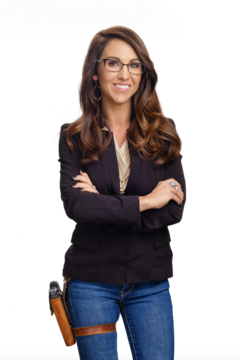
Growing up in western Colorado, my baseball team traveled around the state playing against the tiny towns of Rifle, Grand Valley, Rangely, Delta, and Meeker. We had a good team and when I was playing, our coach was an ex-Houston Astros pitcher who brought real science and sophistication to our practices. Having an ex-pro coach our team was something that we probably didn’t appreciate enough but it definitely lifted our game. As teens, we found ourselves learning the same major league skills of run-downs, sacrifice bunts, adjusting infield depth and very complicated hand signals. The coach, Joe Arnold, had a consistently disapproving face, and paradoxically we had a strong desire to win his approval. The expression never changed, and we probably never fully won his approval, but we got quite good at executing major league strategy despite our ungainly adolescent bodies.
We needed the skills because our opponents in the tiny mining, ranching, and farming towns around western Colorado all seemed to be four to five years ahead of us in physical development, fearless, ruthless, hard-throwing kids. One time when an opposing team was warming up, I honestly wondered why one of the parents was on the field. Then I realized it wasn’t a parent, just a six-foot-two, seventeen-year-old with a five o’clock shadow at 2 p.m. on a hot Colorado afternoon.
That man-child (more man than child) was a pitcher in the town of Grand Valley. Grand Valley is now called Parachute, named after the creek that comes out of the mountains to its north. Grand Valley was a much better name for the town and I don’t know which public relations guru changed it. I don’t remember the name of that kid but I’ll call him Stan because if he wasn’t named Stan he must have been named Billy or Jimmy. He definitely wasn’t named River or Rowan and his parents definitely never felt a need to “validate” his feelings.

Photo by Mark Harvey
Stan was tall and burly, with thick wrists and sinewy forearms, had a rough face from an abided case of acne, a terrible haircut, and threw a fastball that I would estimate traveled almost 90mph. He also had exquisite control of his pitches. Needless to say, Stan carried his team to levels well past what that tiny town deserved. Our team, scientifically trained in hitting by our coach, had a very hard time getting a hit off of Stan.
Even though Stan was a rival and vanquisher, he was a bit of a hero to us. I tried to get to know him but he was terribly shy and awkward and I sensed once he was done striking us out in order over nine innings, he just wanted to get back onto the swather to cut hay.
Grand Valley sits in Western Colorado’s 3rd District, which at close to 50,000 square miles is by far the biggest district in the state and bigger than Pennsylvania or Ohio. It’s got a bit of everything: some of the highest mountains in the continental United States, more than 100 miles of the Colorado River, the largest elk population of any district in the United States, vast reserves of natural gas, world-famous ski areas, desert canyons and badlands. It also has a lot of remarkable people, some famous, most not. At the moment, what the district is most known for is a gun-toting, wannabe Annie Oakley with a nasty mouth, and a self-absorption so powerful that it threatens to deform what physicists call spacetime. Her name is Lauren Boebert and though she is our “Representative” in Congress, she embodies none of the qualities that make the 3rd District great. To understand what Boebert is not, it helps to meet a few of the characters that better represent Colorado’s Third.
When I was playing baseball as a teen, I didn’t know that the same tiny town of Grand Valley that produced hard-throwing Stan also produced one of the greatest scientists of our nation’s history, Willard Libby. Libby was born in Grand Valley in 1908 to his farming parents Ora and Eva-May. He began his education in a two-room schoolhouse in Grand Valley that sits there today. The little handsome schoolhouse is made of local sandstone and is located in a field of sagebrush.
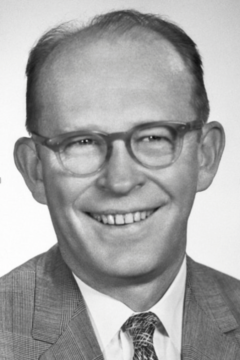
It’s hard to fathom that a boy who began his education in that schoolhouse would one day be in Sweden accepting the Nobel Prize for Chemistry from the King of Sweden. But somehow Libby went on to a Ph.D. in chemistry, invented the technique of Carbon-14 dating, worked on the Manhattan Project, and became the founding director of UCLA’s Space Physics Center.
He received his Nobel Prize, in the words of the Nobel Committee, “for his method to use carbon-14 for age determination in archaeology, geology, geophysics and other branches of science.”
As you likely learned in high school or college chemistry, carbon dating involves calculating the ratio of the stable carbon isotope C12 to the radioactive carbon isotope C14 in dead organisms. In living things, we now know that that ratio is predictable and relatively constant. But when an organism dies and it ceases to incorporate more carbon of either isotope into its cells, the ratio of C12 to C14 changes as the radioactive isotope C14 decays. Libby realized that with the predictable half-life of C14 and its decay he could calculate the age of objects thousands of years old.
But to get there, Libby had to make a quantum leap in predicting the ratio of C12 to C14 in the atmosphere and living organisms. Using previously postulated theories of how the C14 isotope was produced by cosmic rays, Libby theorized that the ratio of C12 to C14 in the atmosphere and living things was a trillion to one.
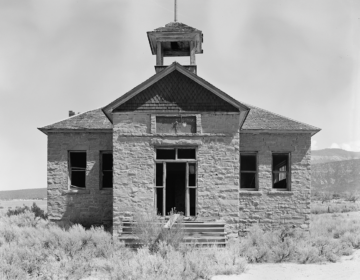
Then came the sticky business of actually measuring that ratio in real life to see if he was right. With today’s particle accelerators, scientists can detect quarks, the smallest sub-atomic unit known to man, and exponentially smaller than carbon isotopes. Next to a quark, a carbon 14 isotope is practically a planet, but in Libby’s days, detecting and measuring carbon isotopes required inventing a rather unwieldy machine. He and his team cobbled together a bunch of Geiger counters into a circular form in what Libby called an “anti-coincidence counter.” The name of that machine sounds like something you’d find in the stuffy confines of a psychic’s office, not a physics lab at the University of Chicago.
But Libby’s anti-coincidence counter worked and proved his theory about the concentration of carbon 14 in the atmosphere. Armed with that knowledge and now a machine that could measure the isotopes he began to test his technique of carbon 14 dating on objects whose age was known. Some of the objects he used to test the accuracy of his method were pieces of the funerary boat of Senwosret III, an Egyptian pharaoh who ruled Egypt from 1878 B.C. to 1839 B.C., and a piece of wood from the tomb of the pharaoh Djoser who ruled some 4,000 years ago. Imagine convincing a museum to loan you those items so you could test them on your anti-coincidence counter.
After confirming that his methods of carbon-dating ancient artifacts were in agreement with the known age of the artifact, Libby wrote, in what must be one of the most restrained and unfussy sentences in the history of the English language, “The agreement between prediction and observation is seen to be satisfactory.” Had I ever made such a discovery, all the grinning-face, face-with-tears-of-joy and man-dancing emojis in the world couldn’t have expressed my excitement. 😃
If Libby’s journey shows us the remarkable possibilities of how far a person can go in the United States when they work hard at their studies, keep an open mind, use their imagination and take advantage of the tremendous scientific heritage in America, Boebert’s anti-science, and anti-intellectual arrogance reminds us of the unfortunate corollary: that laziness and neglect in a person’s education can lead to bad decisions and poor policy. It’s not that Boebert didn’t finish high school or attend college. Plenty of people have succeeded famously without an extensive formal education. Steve Jobs and Bill Gates were both college dropouts. The difference is that despite leaving college before graduating, both read voraciously, kept an open mind, taking close consideration of their sources of information, and developed critical thinking skills.
Writing about Lauren Boebert requires me to look up some of the things she’s tweeted or written about. And most of that is far more radioactive than any of Libby’s isotopes– closer to polonium, really. I can handle a little toxicity in my life, but Boebert has taken dissembling mean-girl to a new level. But here goes.
On Feb. 19, 2021, Boebert tweeted, “Protecting and defending the Constitution doesn’t mean trying to rewrite the parts you don’t like.” Well, that’s true other than the 27 amendments to the constitution, including her favorite, the Second Amendment, the 19th Amendment, which gave her the right to vote, and the 21st amendment which nullified the 18th Amendment’s prohibition of liquor, and therefore allowed Boebert to sell liquor at her restaurant, Shooters.
Then there’s the whole cringe-worthy gun-toting thing that Boebert does. Unless you’ve been living without an internet connection, you’ve probably seen one of her videos, tweets, or letters going on and on about her guns. She wears a pistol on her thigh in what I suppose is meant to be a sexy accessory, piles up guns on her bookshelves as a backdrop to her video conferencing, speaks about the Second Amendment as if it’s the only principle guiding America. To use a word that she might understand with her mean-girl argot, it’s just GROSS!
I grew up around ranchers and war veterans and while they kept their guns clean and in good condition, they generally kept them out of sight except when they were using them. They had enough confidence in their lives and themselves that they didn’t need to parade their guns around to compensate for something lacking in their character. Even a friend of mine who is a world-class skeet and trap shooter doesn’t do the gun-in-your-face thing.
I have some guns myself and love to shoot, but the idea of wearing one in public on my hip like some wannabe Wyatt Earp is just GROSS!
Boebert’s immodesty about her guns and “westerness” reminds me of why I kind of like the people who accomplish a lot, but don’t clobber you over the head with their accomplishments. To those who haven’t visited Colorado’s 3rd District and probably think since we elected Boebert we’re all a bunch of in-your-face yahoos wearing those giant foam cowboy hats, I assure you there are lots of people in the district who embody quite the opposite.
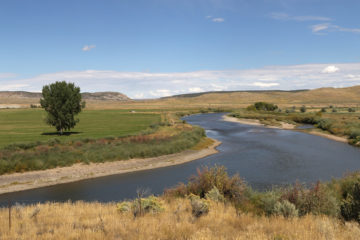
There’s a little town in northwest Colorado called Maybell, not far from where the Meeker massacre took place. Maybell is so small that you might miss it twice: once on the way through, and the second time after you turned around to go back to its one gas station. I know a cowboy from Maybell who used to help us move cattle on our ranch. He was a stocky man who rode a huge horse. The first time he rode with us I was stunned by his ability to ride that horse at a full gallop over rocks and logs, up canyons and down steep ravines. He rode with grace and without an ounce of fear.
To protect the privacy I know he likes, I’ll call him Bill, and like the pitcher from Grand Valley, I didn’t get the feeling his parents ever “validated” his feelings either. After riding with him that day, I asked if he had ever done any rodeo.
“Did a bit,” he said.
“Like where,” I asked.
“Oh, you know, Calgary Stampede, Frontier Days, stuff like that,” he said, casually mentioning two of the most prestigious rodeos in the world.
“Did you ride many bucking horses in your career,” I asked.
“Yeah, I rode a few,” he said.
“How many?” I asked.
“A couple hundred,” he said.
“Did you ever get hurt,” I asked.
“Well, I broke the tibia and fibula on my right leg, I broke the femur of my left leg and cracked my pelvis once, I broke ribs four times, I broke my right arm twice, and my left arm once, tore off part of my ear and cracked my skull a few times and lost a few teeth….so it depends on what you mean by getting hurt.”
If ever there was a cowboy who deserved to wear the hat, boots and belt buckle, it was Bill. Proportionate to his career, he could have worn a thirty-gallon hat (if such a thing existed) without shame. But Bill was as low-key about his cowboy gear as he was his injuries. He was as modest about his bronc riding and toughness as Boebert is immodest with her guns. The times I ran into him in town he was wearing a newsboy cap and you might have mistaken him for a tourist from County Cork or Dublin. He probably would make a good Representative with his quiet, humble ways and might have been elected with his cowboy bona fides. I never saw him with a gun.
One of the things that Boebert likes to go on and on about is communism. It’s her go-to criticism of anything she doesn’t like. On July 7, 2021, she tweeted, “COVID-19 mutated into Communism a long time ago.” Get your arms around that one, dear reader. When I think of a virus measured in nanometers that infiltrates our bodies by tricking our cells and immune system, I think of really good hackers living in their mothers’ basements with a great internet connection, not communists. The stereotypical Communists are better at gulags than high-tech and if a medical condition were to be named after them it would probably be a giant red rash covering half the landmass of your body.
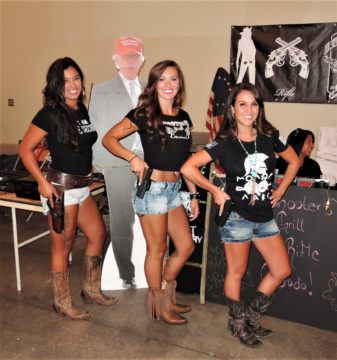
Boebert loves to brag about her small-business acumen, citing her restaurant, Shooters Grill in Rifle, Colorado. Obviously, if you name your restaurant Shooters and you’re obsessed with guns and the display of guns, your front-of-the-house employees are going to be openly armed. And the waitresses at Shooters Grill are indeed carrying sidearms just in case someone complains about food poisoning. Shooters Grill has been cited for failing to pay employment taxes (including having liens placed on the business) over a five-year period, but perhaps that’s just Boebert’s way of not financing what she considers to be communism.
Another son of Colorado’s 3rd District was David Packard. Packard, the co-founder of Hewlett Packard, was possibly even a better businessperson than Lauren Boebert. He grew up in Pueblo, Colorado, a working-class town known historically for being “the saddle-making capital of the world” and also a great steel producer. Almost anyone who’s ever printed a document or used a computer knows the name Packard. He went on to become a billionaire and then formed the David and Lucile Packard Foundation and donated most of his wealth to it.
Packard was born in 1910, just two years after Willard Libby, and considering his beginnings, his life’s journey is almost as remarkable. Photos of Pueblo around the time of his birth show a town of dirt streets dominated by horse and buggies and steel mills belching thick plumes of smoke. It’s hard to fathom that in one lifetime he went from those rustic conditions where most people didn’t even have electricity to building a company centered around microchips. And though Packard never won a Nobel Prize like Libby, Fellows funded by his foundation did. One Packard Fellow even helped in the recent discovery of a neutron-star collision (don’t ask).
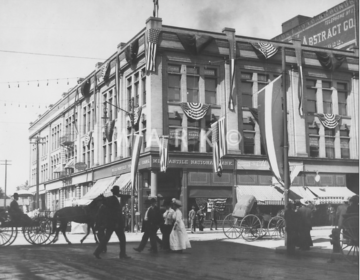
Packard served as US deputy director of Defense for a spell in the late 1960s. Although he authored the “Packard Memo,” a controversial argument in favor of using military forces to counter exceptional domestic uprisings—a memo making exceptions to the traditional Posse Comitatus Act of 1878–Lauren Boebert would have likely labeled him a communist. For Packard also served on the Trilateral Commission. For those not well versed in conspiracy theories, The Trilateral Commission has been cited as a major financier of the drug trade and shell organization of a one-world-government. With her Qanon credentials, Boebert has to be privy to that theory. Mercifully David Packard died before Boebert could tweet about him for fitting her version of communism or for failing to have reached her stature in the business world.
Defending the people of Colorado’s 3rd District with a few examples of some pretty amazing characters who grew up here is probably a fool’s errand. After all, we elected Boebert. So let me change tacks and appeal to those who voted for her to vote for someone else next year. Admittedly the cross section of people who voted for Lauren Boebert and also read 3Quarks Daily is likely a pretty small number. But for both of you, let me be clear: she does almost nothing for this district.
Your sassy, gunslinging, willfully uninformed mean-girl poseur voted against the infrastructure bill and prior to that failed to procure some pretty nice earmarks worth tens of millions of dollars that would have really helped western Colorado. She voted against the infrastructure bill in a form of posing as fake as her gun-slinging, but this time posing as a fiscal conservative.
Fortunately, the infrastructure bill passed and will bring Colorado billions of dollars for EV charging stations, public transportation, fixing bridges, road repair, airport repair and better broadband. The infrastructure bill will likely really help Pueblo County where Packard grew up and where more than 20% of the population lives in poverty. Moffatt County where my rodeo friend Bill came from could also use the help.
To my friends in other districts, forgive us. We will do better next time. We have to. Boebert may be our “representative,” but she does not represent Western Colorado.
